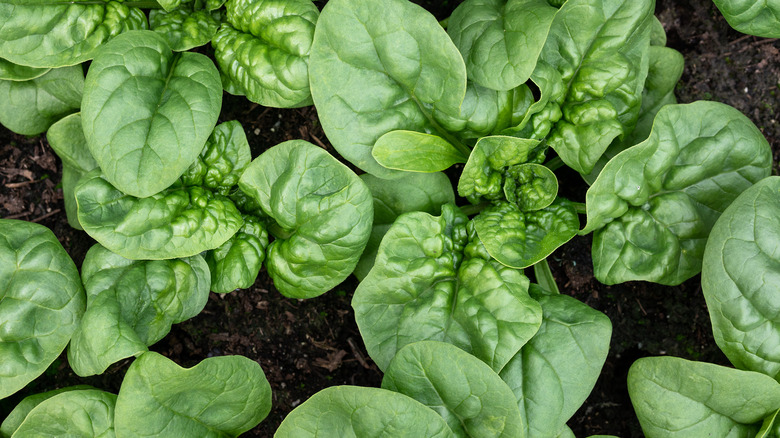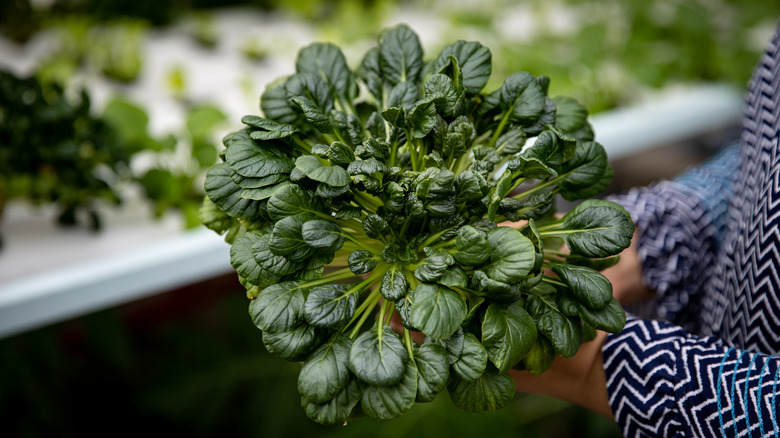The Unbelievable Way Scientists Taught Spinach To Send Emails
Many people dream of the day that technology will allow them to communicate with their pets. But what about your plants? Scientists at the Massachusetts Institute of Technology have achieved just that as they've created a type of spinach that's able to send emails (via Global Citizen).
It's actually a relatively simple system. Through a combination of their natural biology and electronic modifications, the plants are able to detect specific compounds in the soil. Subsequently, a mechanism in the plant's leaves is triggered. That mechanism — carbon nanotubes — emits a signal that is picked up by a nearby camera, which then sends a message to scientists that's delivered straight into their email inboxes (via Euronews).
The science of embedding electronic devices into plants is called plant nanobionics, according to Mashable Southeast Asia. Researchers working in plant nanobionics hope to make plants that are capable of new and exciting things, including, but not limited to, sending emails (via the Massachusetts Institute of Technology). But why would anyone want an email from their spinach, anyway? For a surprisingly serious reason.
Bomb-sniffing spinach
Figuring out how to detect bombs and other explosive devices has been a pursuit of humans for as long as these weapons have existed. Over the years, we've trained bomb-sniffing dogs and rats, among other things, to help us out in our quest. But though these critters are undeniably skilled, creating a bionic, bomb-sniffing spinach could be a potentially superior alternative to training animals. That's why the scientists who developed email-sending spinach trained it to detect nitroaromatics, a particle found in many explosives (via Global Citizen).
Plants are a good way to monitor what's going on in the ground because they're always taking up water and responding to the environment around them, according to Mashable Southeast Asia. As Professor Michael Strano, the mastermind behind the project, told the publication, "Plants are very environmentally responsive. They know that there is going to be a drought long before we do." He added, "They can detect small changes in the properties of soil and water potential. If we tap into those chemical signaling pathways, there is a wealth of information to access."
When the spinach plants identify signs of explosives present in the soil, they can quickly and clearly provide data about the threat, sent right to authorities' email boxes without putting any sentient beings at risk. That makes them a potentially valuable tool.
Other uses for the technology
Though this research is eye-catching, it's not the first time that plants have been modified to identify compounds in the soil. For instance, plants have been created that can identify TNT, sarin, and dopamine, according to Mashable Southeast Asia. Some other plants have been made that can detect nitric oxide (via Global Citizen). Nitric oxide is a pollutant, according to MIT.
In the future, even more compounds could be added to this list. For instance, plants could be made to monitor certain chemicals or compounds that are related to climate change. In this way, plants could be an important way for us to collect information about what is going on in the environment so we can act promptly and accurately. And plant nanobionics continues to expand beyond particle detection efforts, too. For instance, scientists say that the use of nanobionics could help them monitor the health of plants themselves to learn more about their biology — an endeavor that could offer hosts of as-yet-unknown benefits to fields like agriculture, medicine, and ecology (via MIT).


